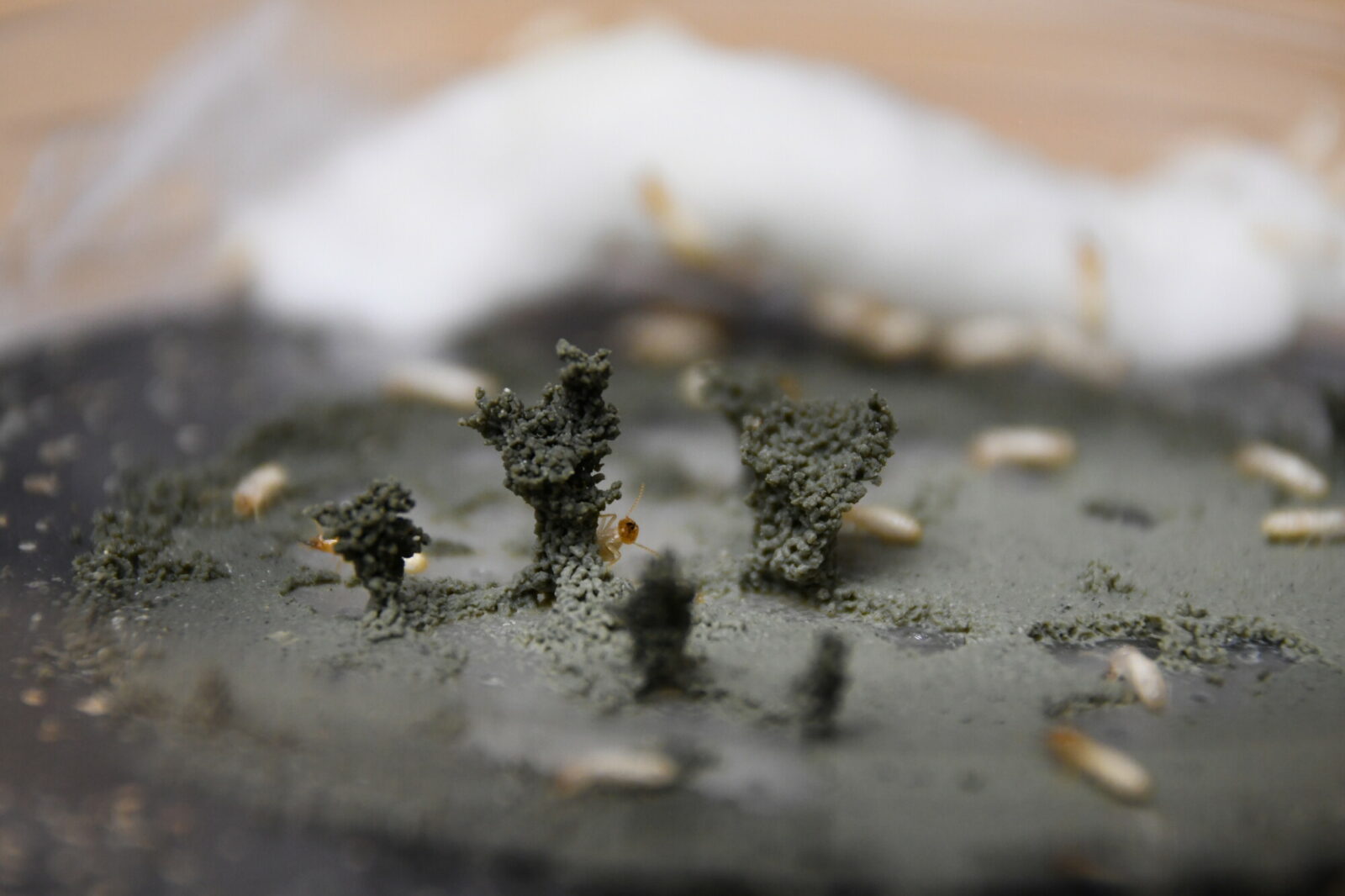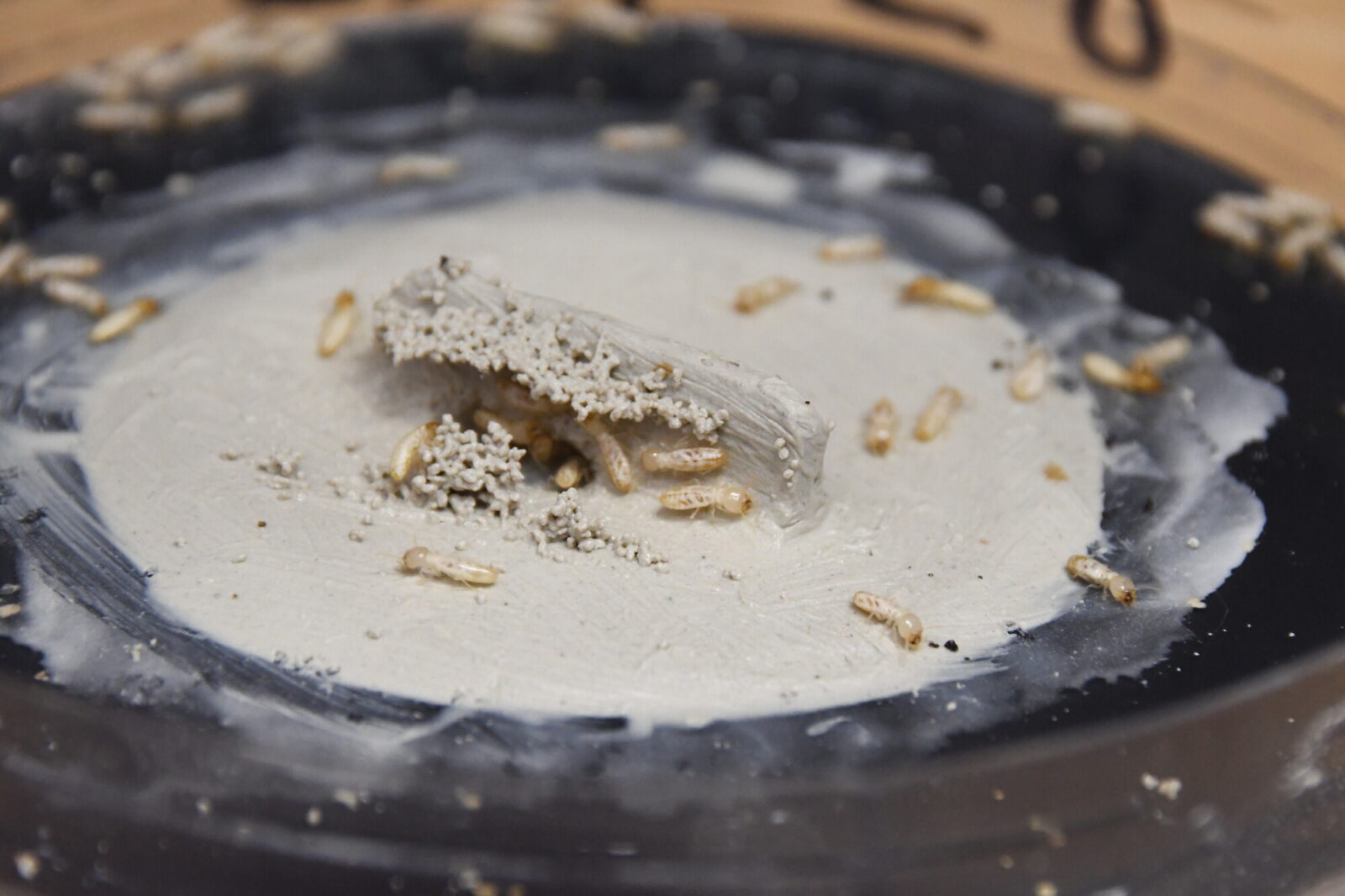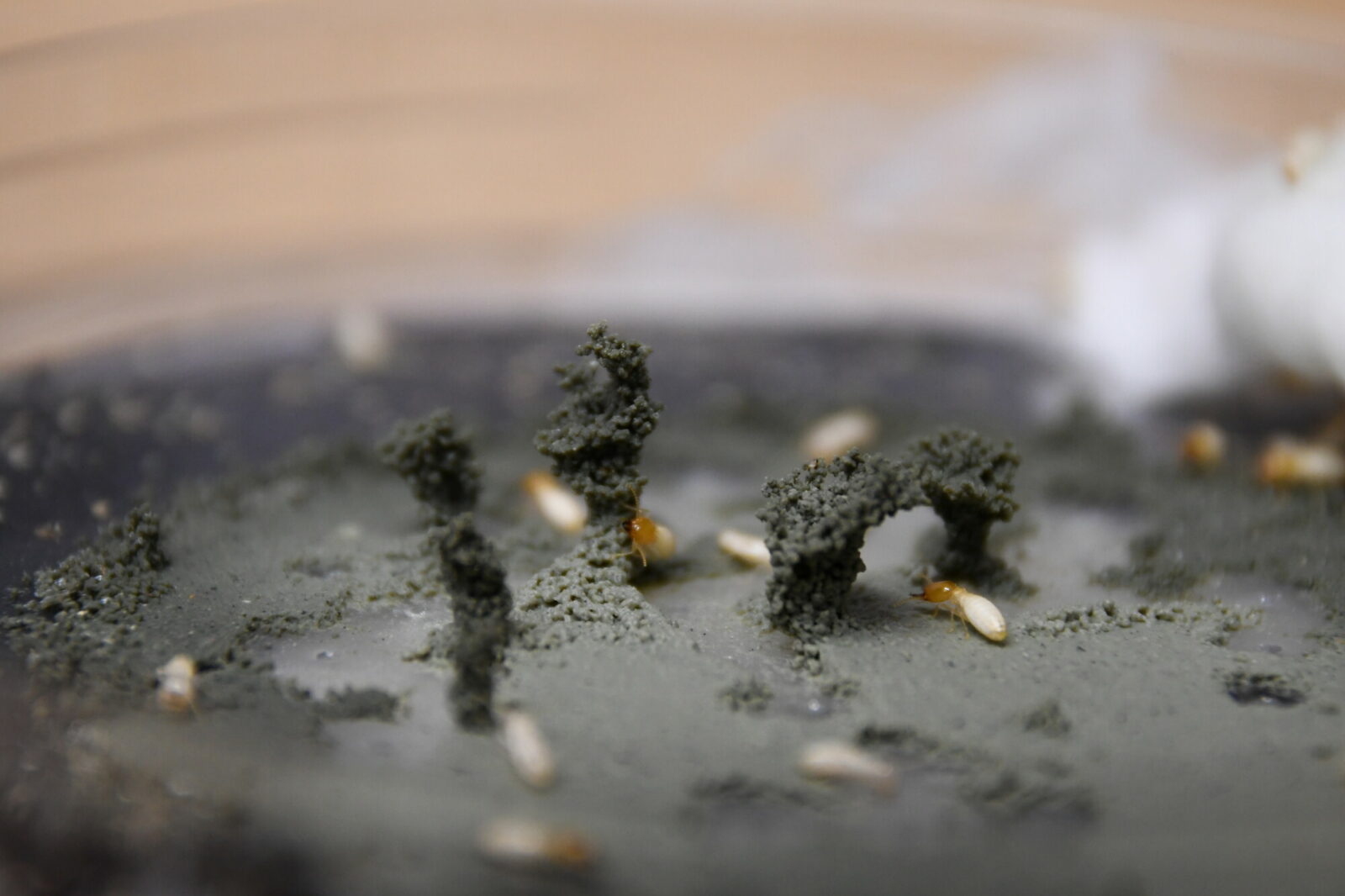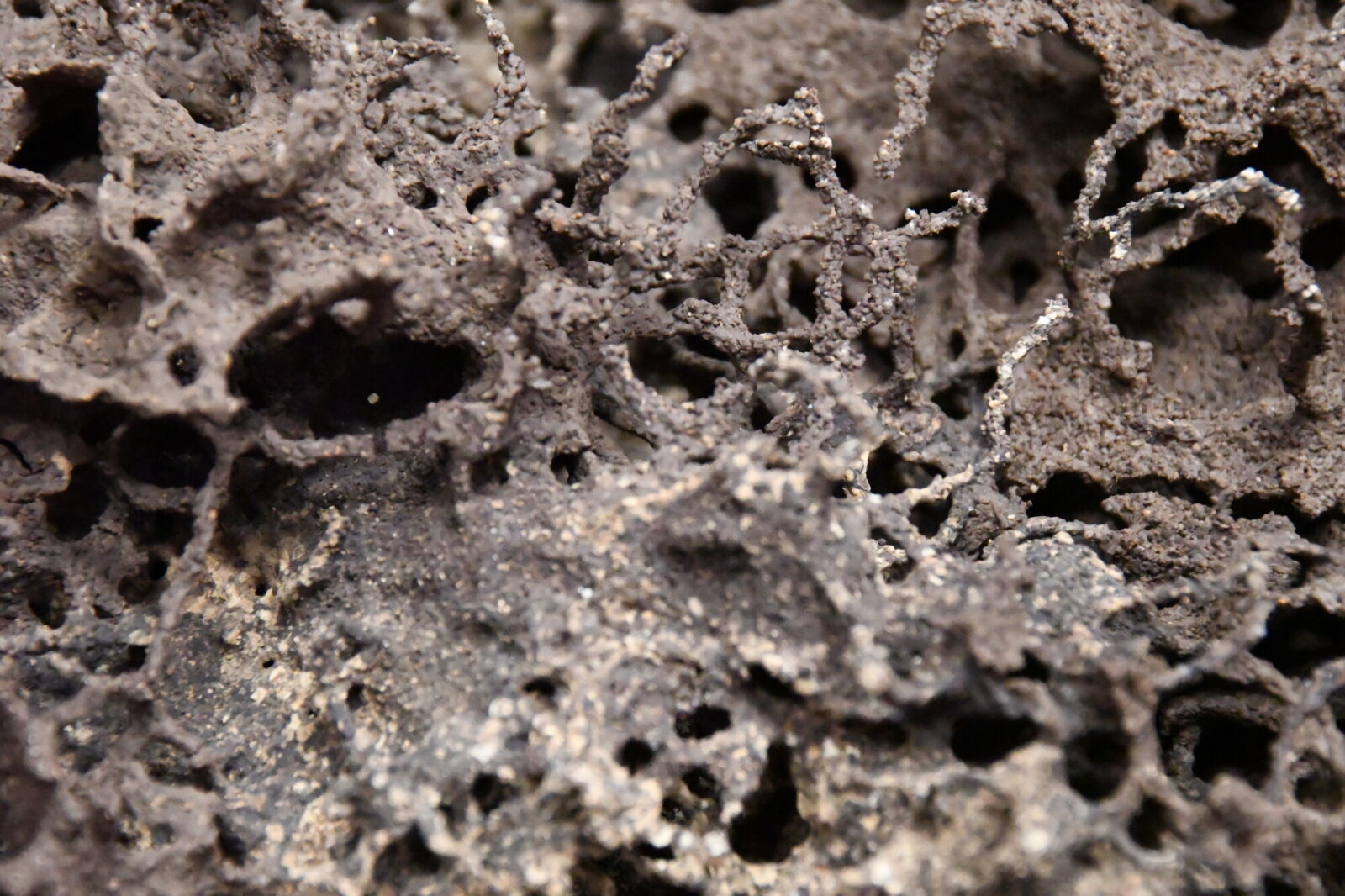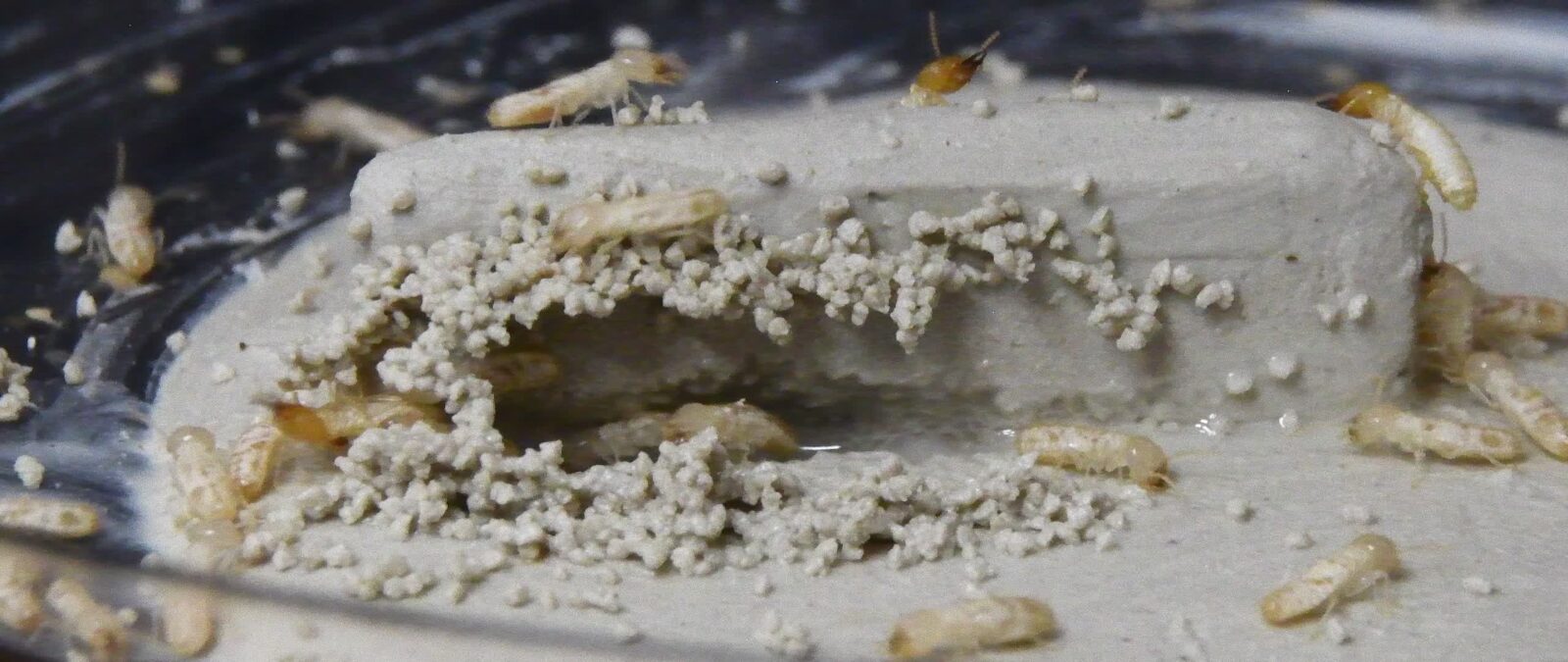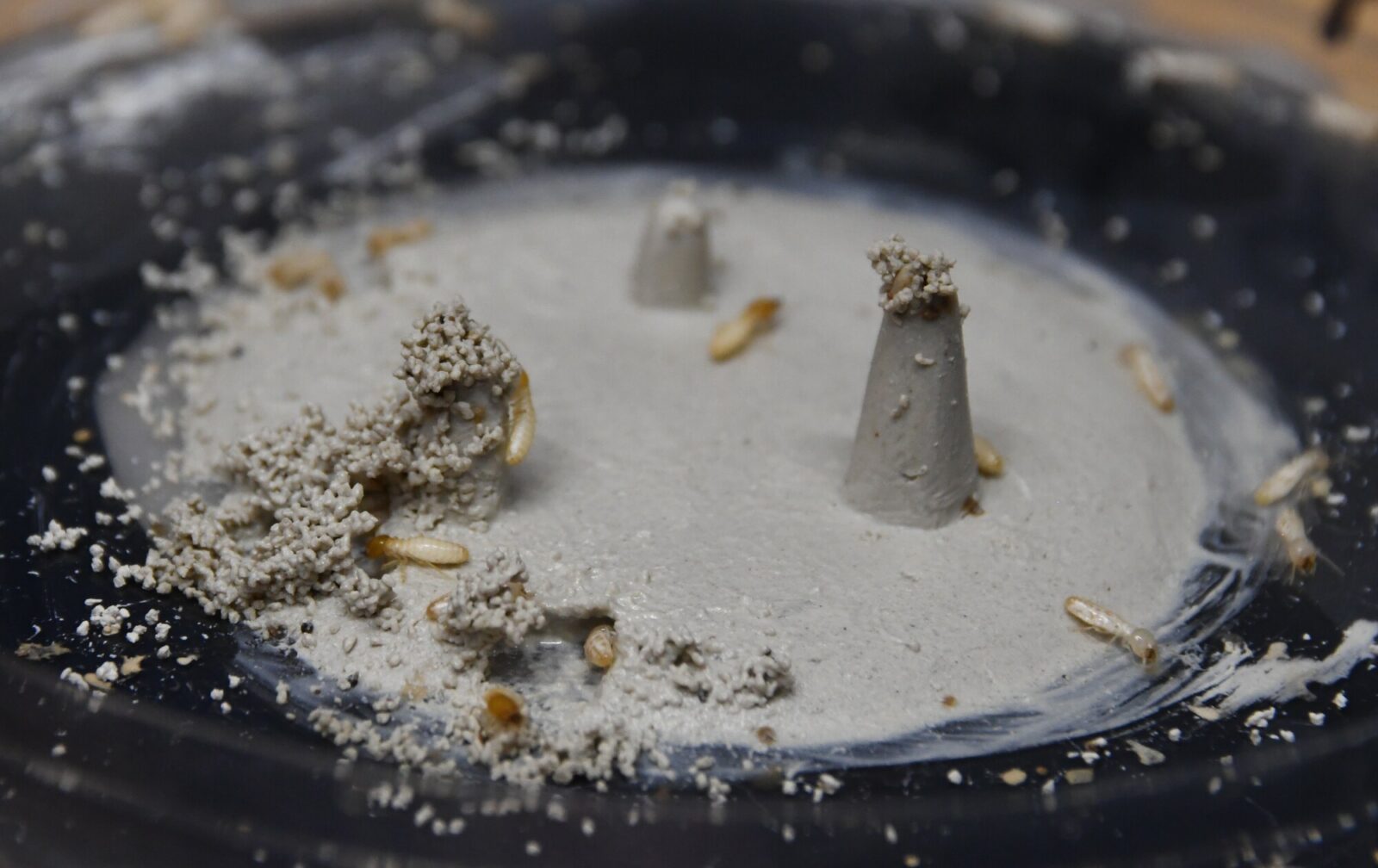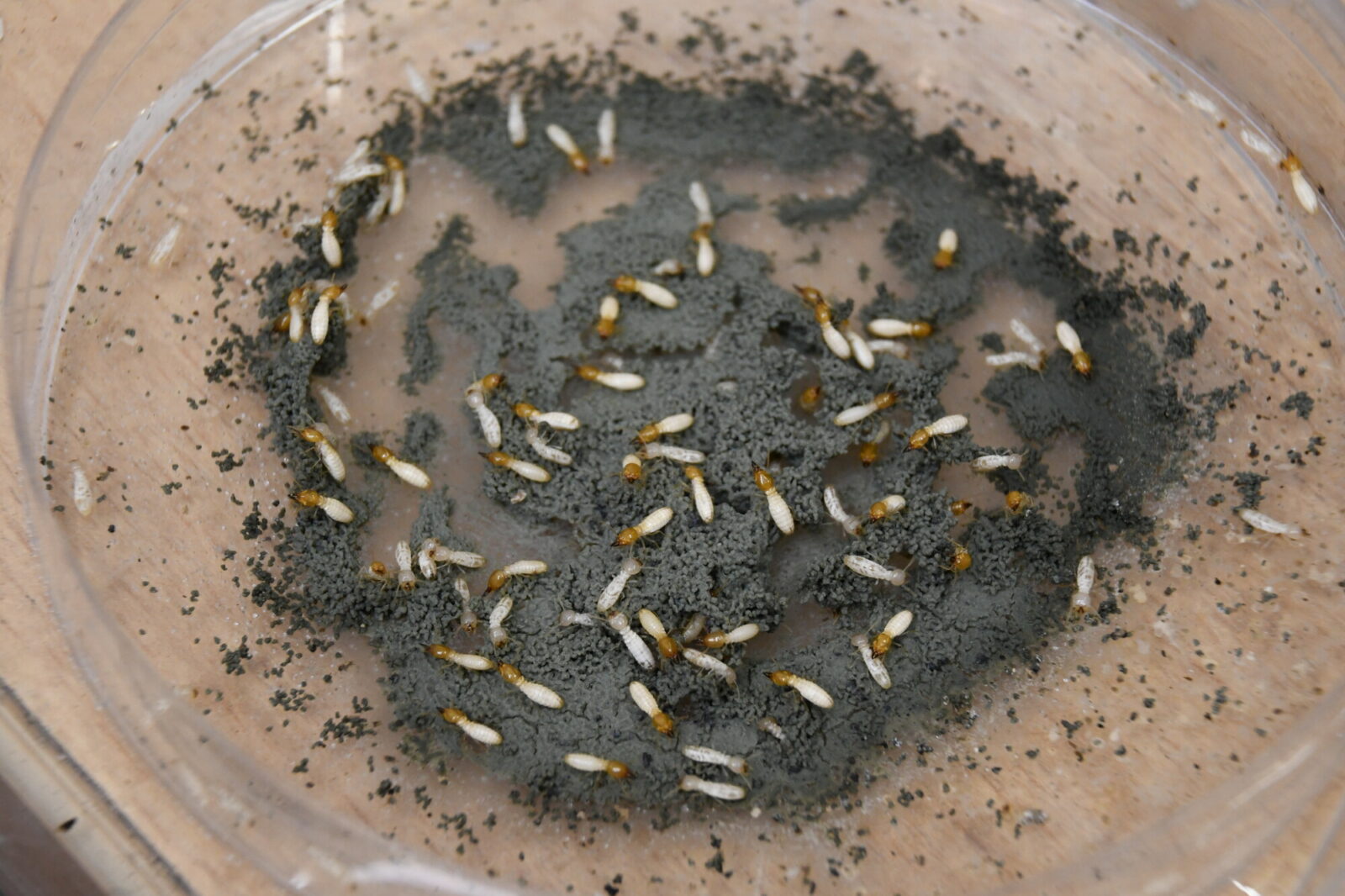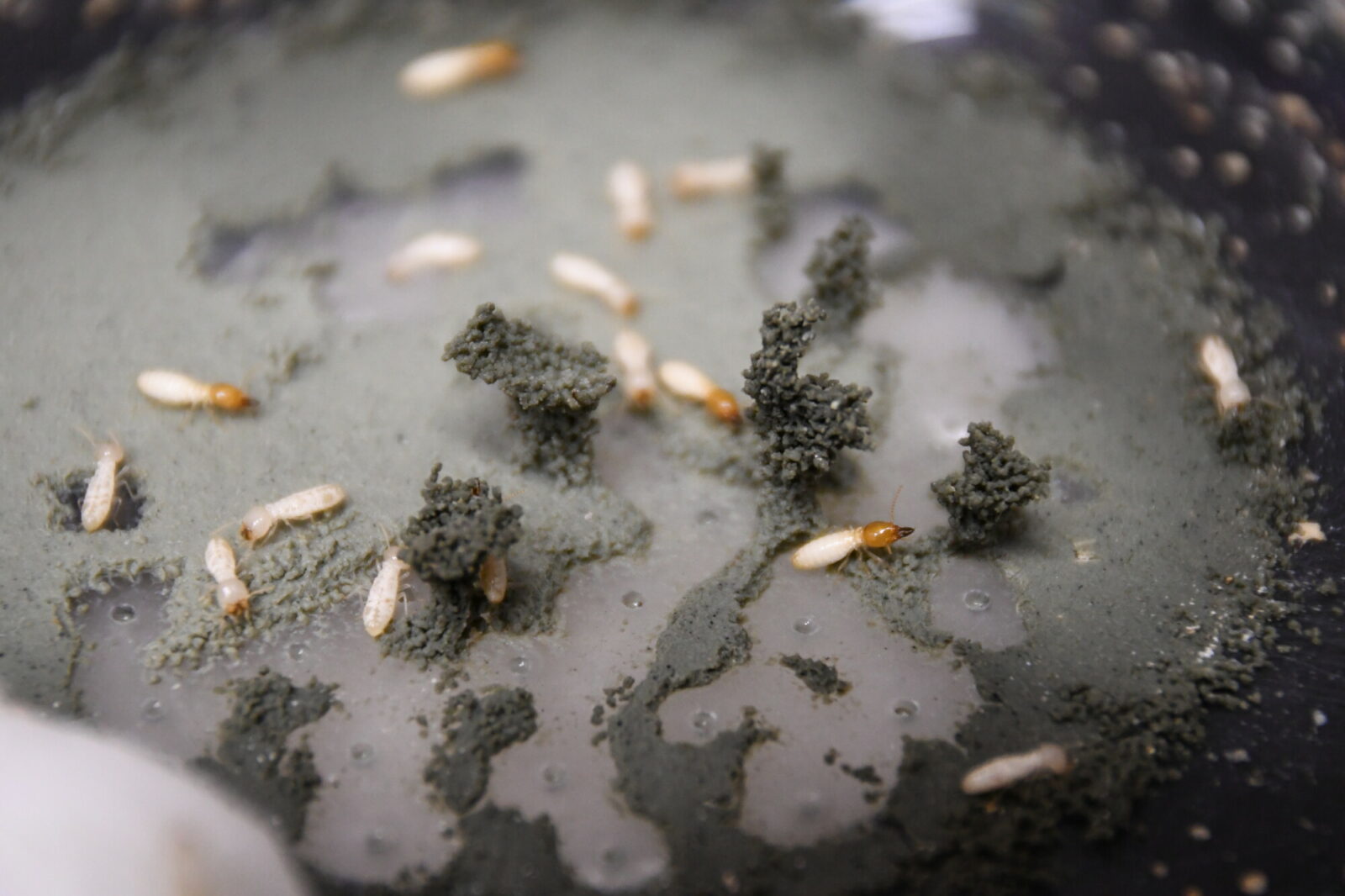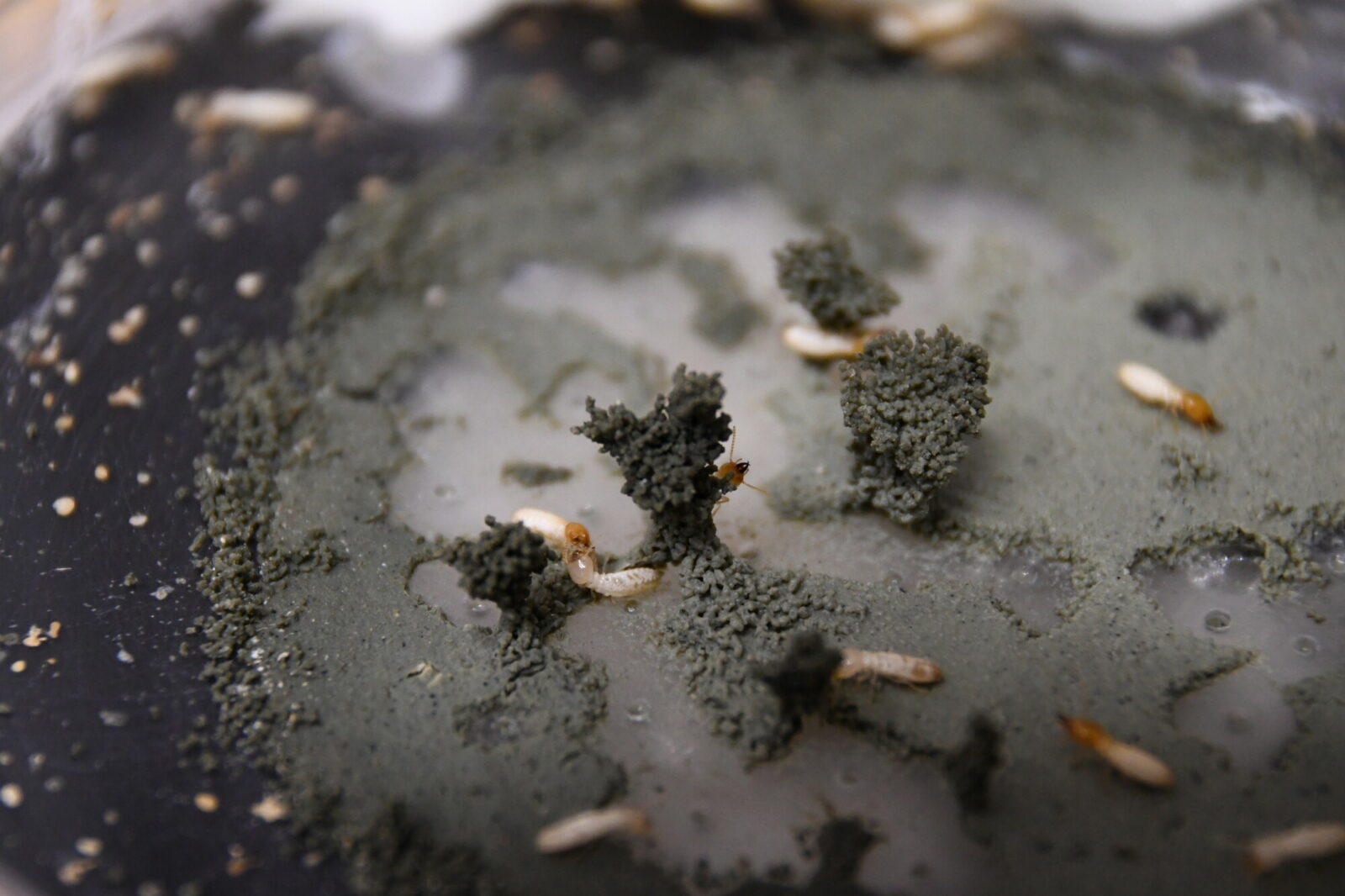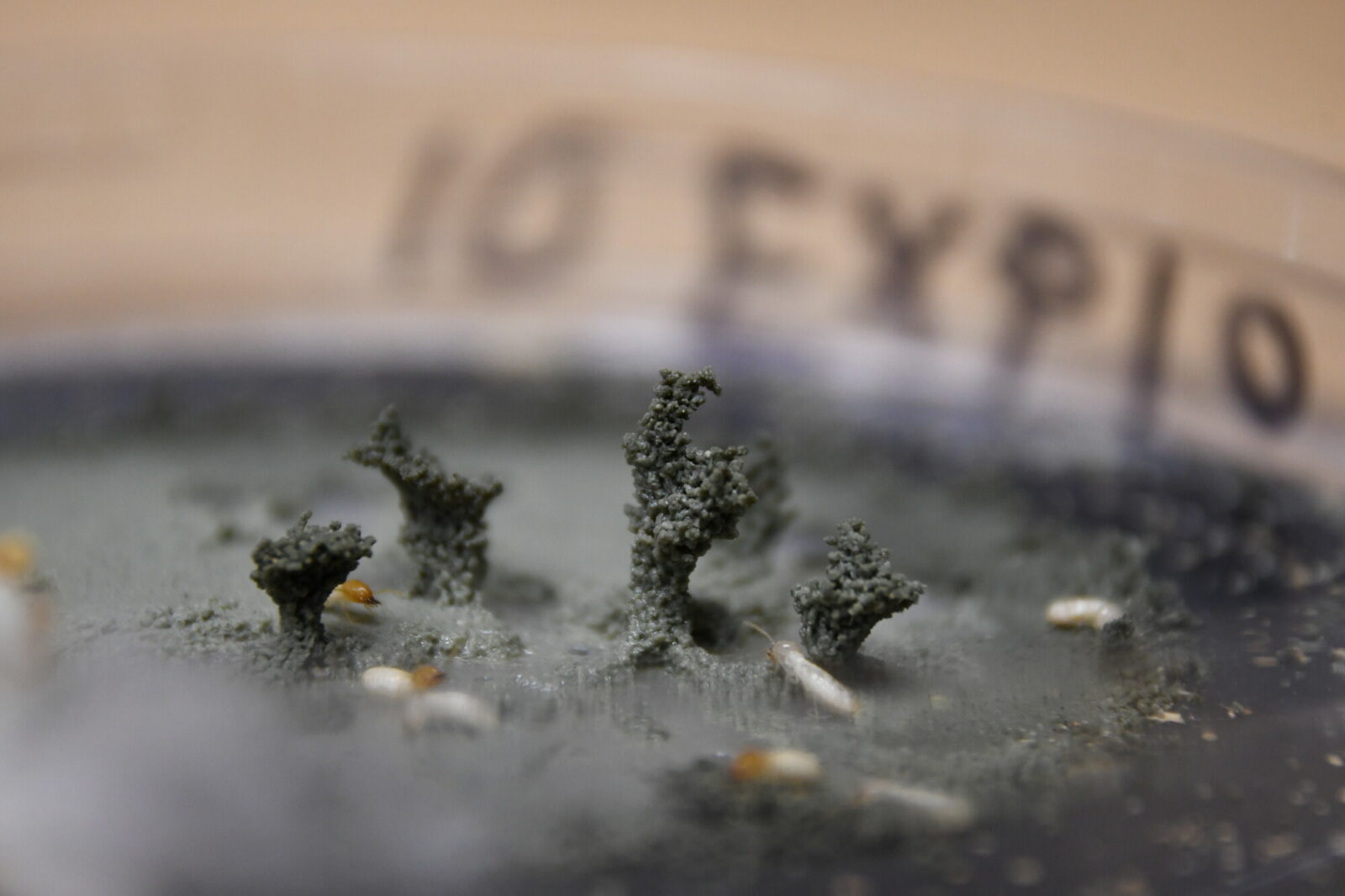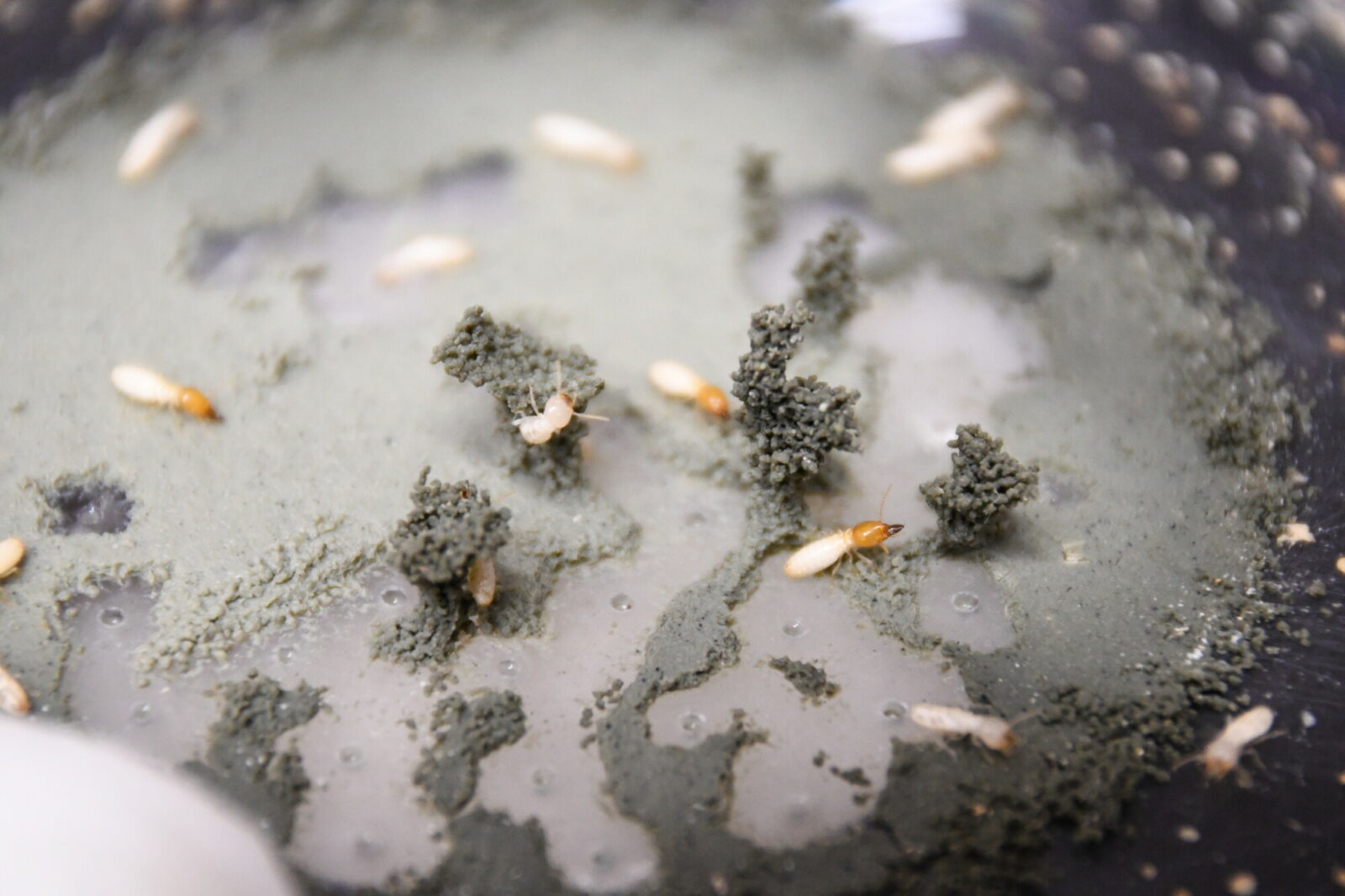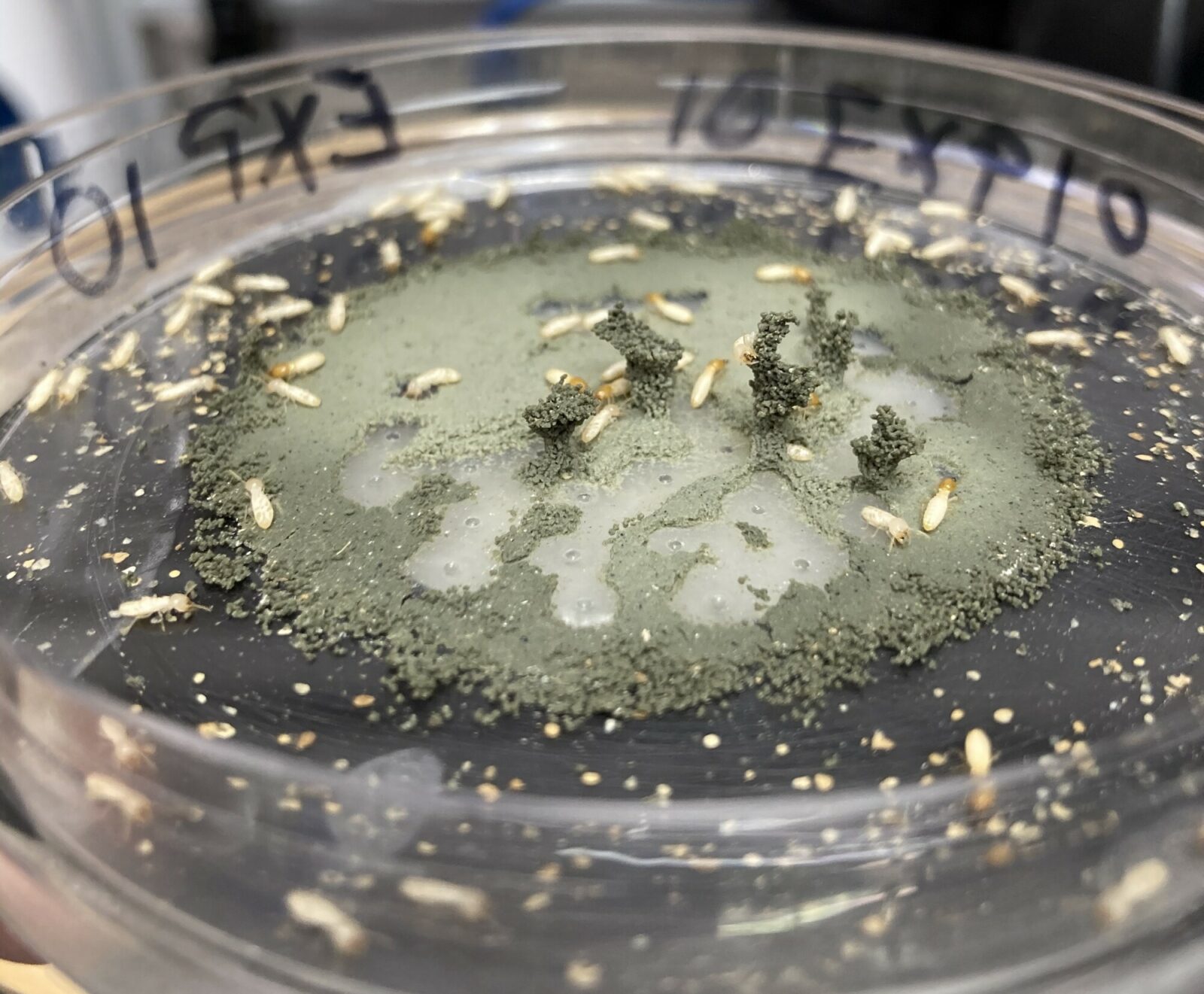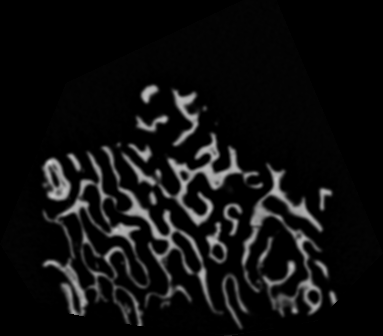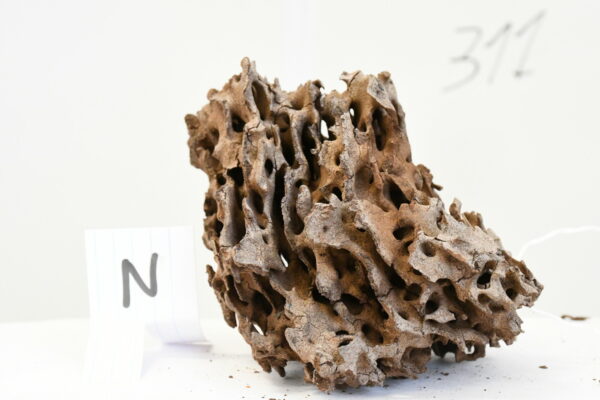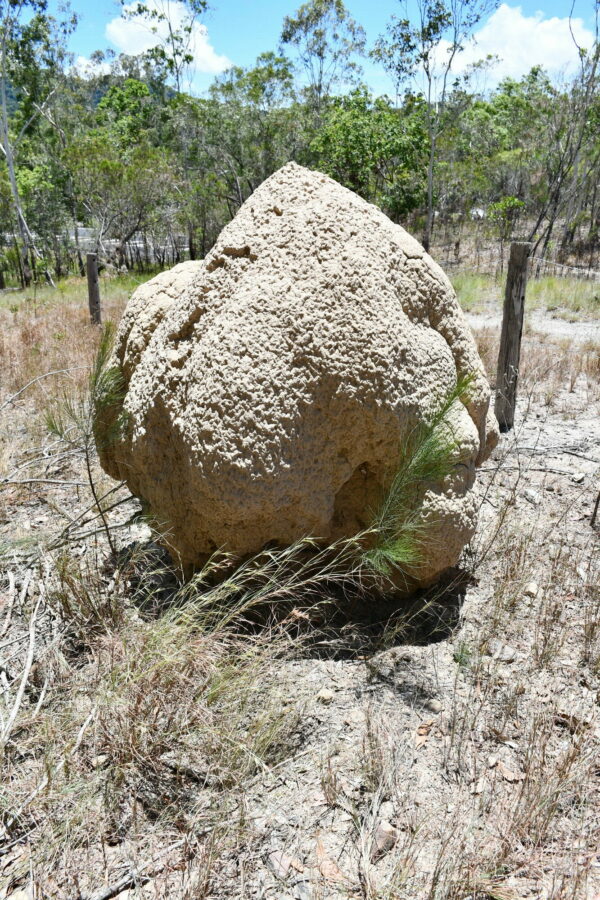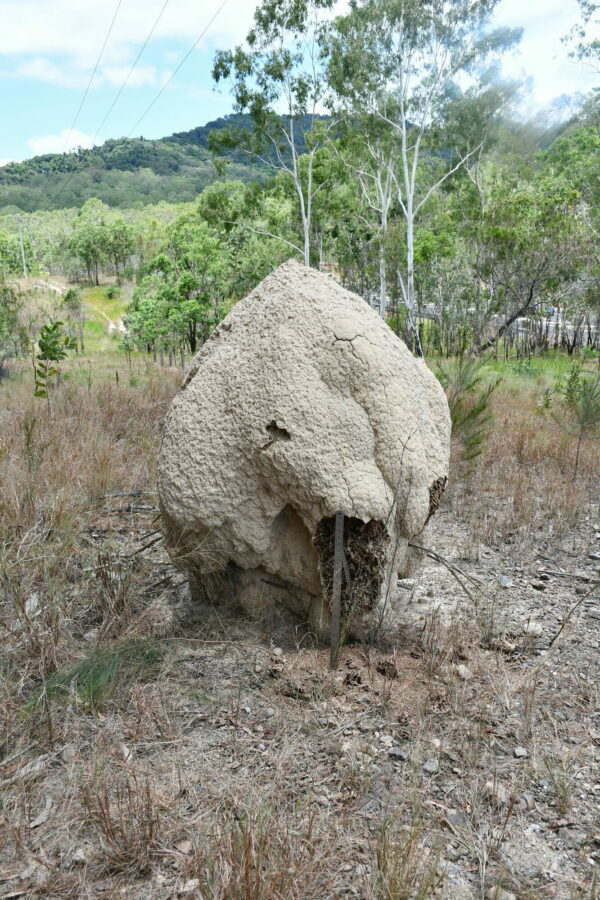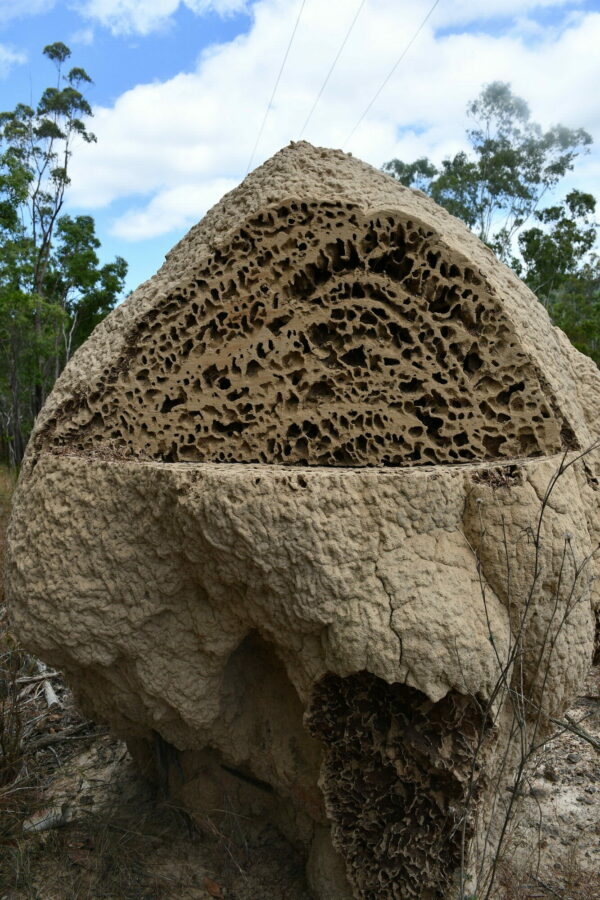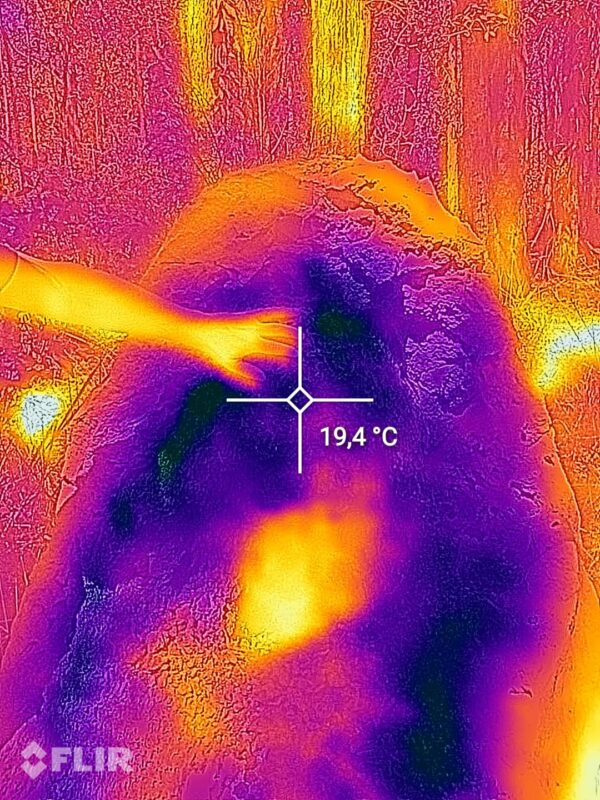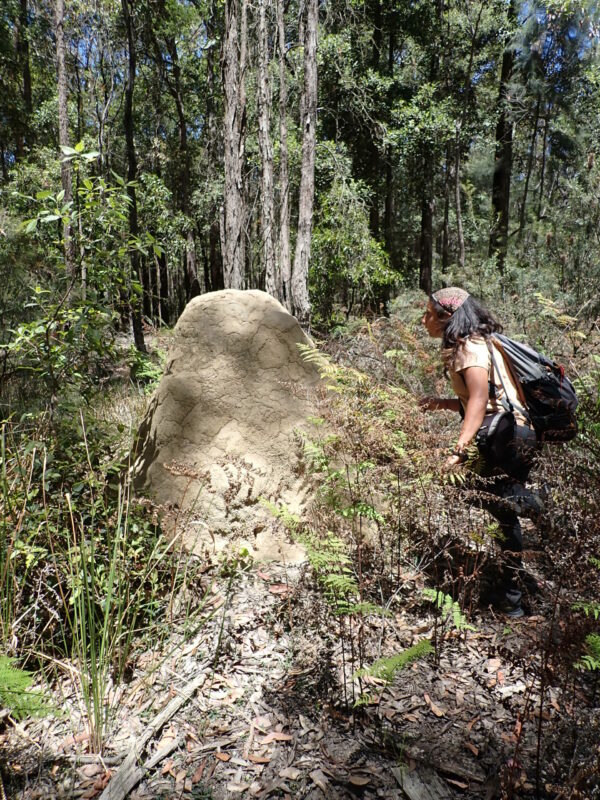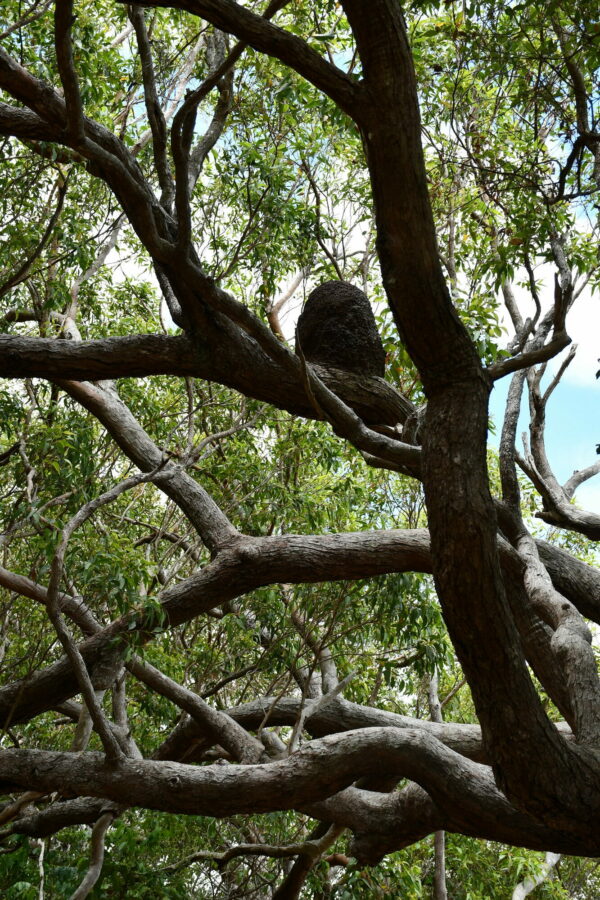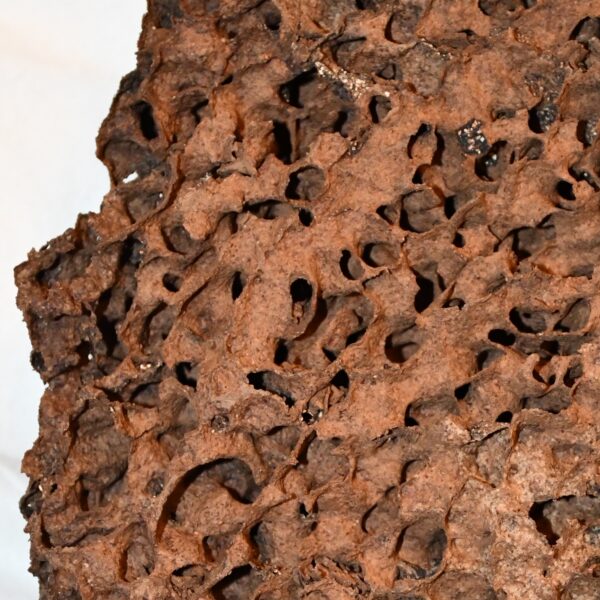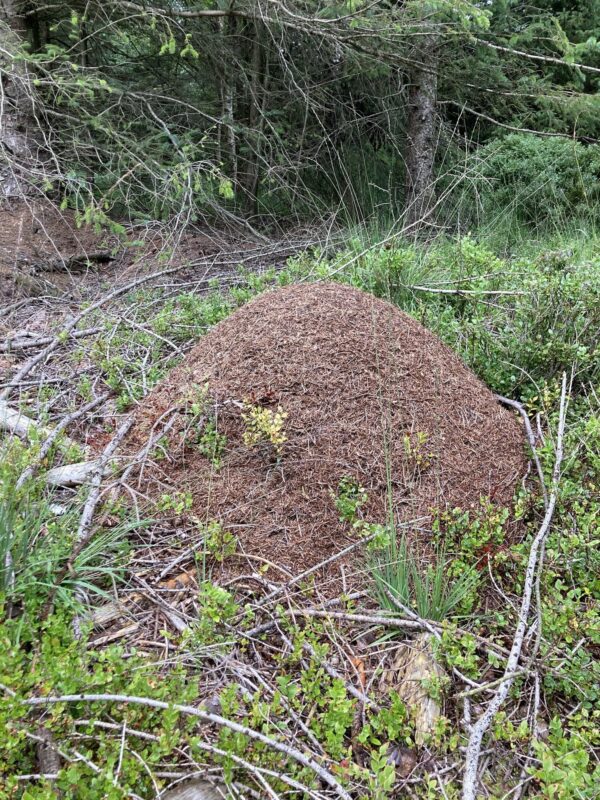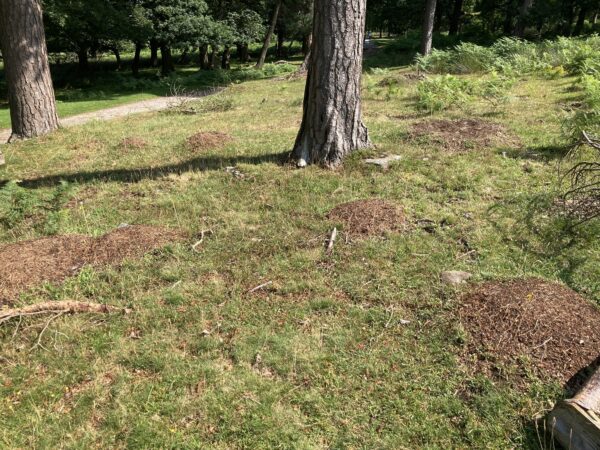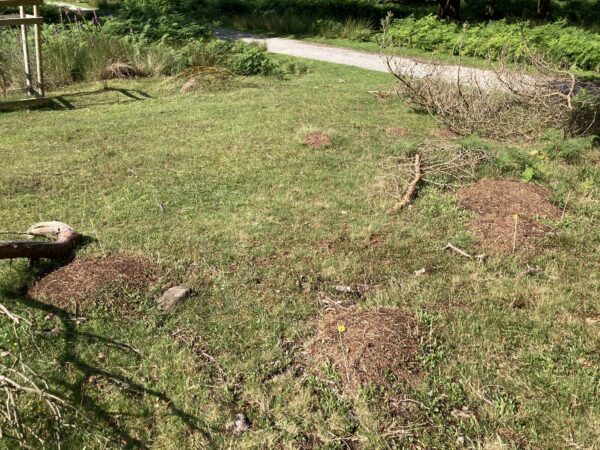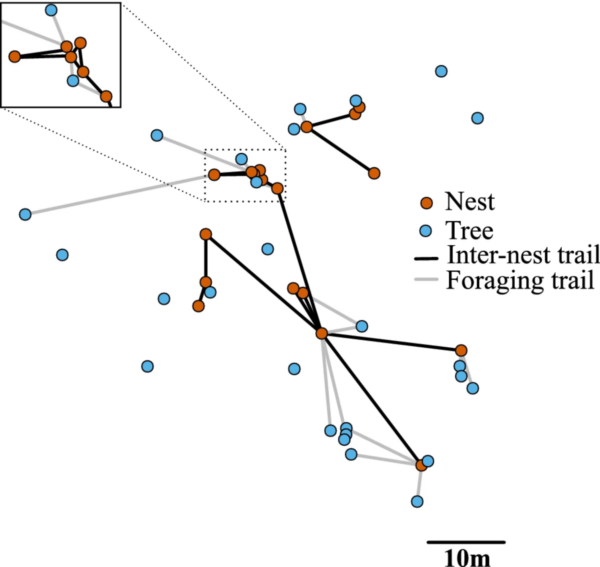These are lab-reared termites of the species Coptotermes gestroi that are kept in the Laboratory LEEC in Villetaneuse by Dr David Sillam Dussès.
Here we see one image of the structures that these termites build naturally in the lab, with the classic “scaffolds” found in many termites of the Coptotermes genus.
We also see multiple images and videos of termite building activity. For these experiments, a small experimental population of these termites (typically only 50 workers and 5 soldiers) were placed in a Petri dish with a thin layer of clay and some artificial pillars or walls. Soon after they are moved into the Petri dish, termites start some building and digging activity, allowing researchers to monitor termite building behaviour and to understand the “rules” of nest construction (although, of course, the conditions in these experiments are very different from those encountered in natural nest-building).
Coptotermes gestroi termites appear to be particularly sensitive to the local geometry of their environment when they choose where to deposit a new clay pellets: they preferentially build at regions of high curvature. If you think about it, the regions of highest curvature in a growing structure are the tips of pillars, or the edges and the corners of the walls; adding new pellets there is a good rule of thumb to make those pillars grow -and eventually branch-, leading to the formation of scaffolds like those that we see in the big nest.

